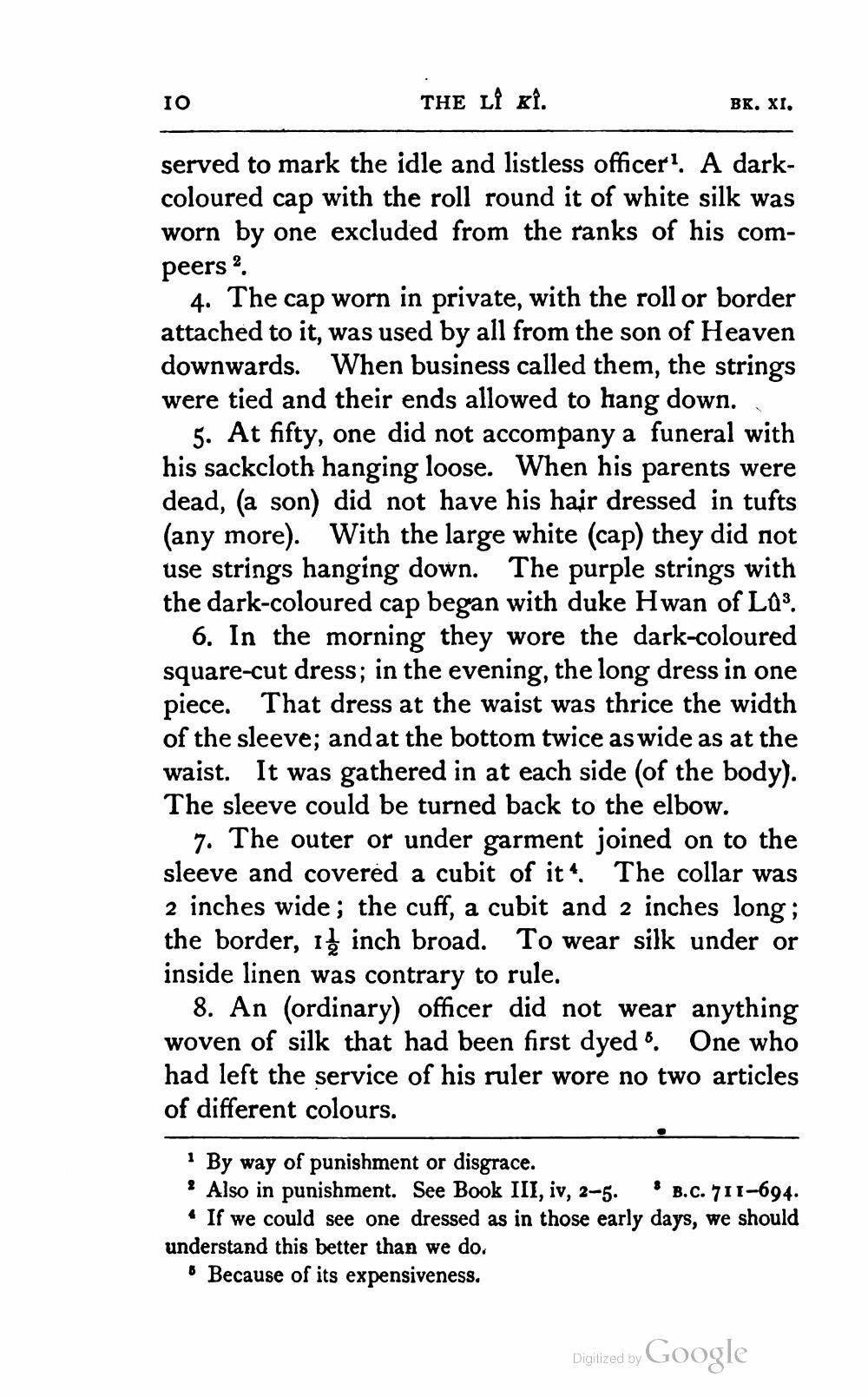________________
THE LÎ xf.
BK. XI.
served to mark the idle and listless officer! A darkcoloured cap with the roll round it of white silk was worn by one excluded from the ranks of his compeers ?
4. The cap worn in private, with the roll or border attached to it, was used by all from the son of Heaven downwards. When business called them, the strings were tied and their ends allowed to hang down.
5. At fifty, one did not accompany a funeral with his sackcloth hanging loose. When his parents were dead, (a son) did not have his hair dressed in tufts (any more). With the large white (cap) they did not use strings hanging down. The purple strings with the dark-coloured cap began with duke Hwan of Las.
6. In the morning they wore the dark-coloured square-cut dress; in the evening, the long dress in one piece. That dress at the waist was thrice the width of the sleeve; and at the bottom twice as wide as at the waist. It was gathered in at each side (of the body). The sleeve could be turned back to the elbow.
7. The outer or under garment joined on to the sleeve and covered a cubit of it The collar was 2 inches wide; the cuff, a cubit and 2 inches long; the border, 1 inch broad. To wear silk under or inside linen was contrary to rule.
8. An (ordinary) officer did not wear anything woven of silk that had been first dyed. One who had left the service of his ruler wore no two articles of different colours.
· By way of punishment or disgrace. ? Also in punishment. See Book III, iv, 2-5. B.C. 711-694.
• If we could see one dressed as in those early days, we should understand this better than we do.
* Because of its expensiveness.
Digitized by Google




